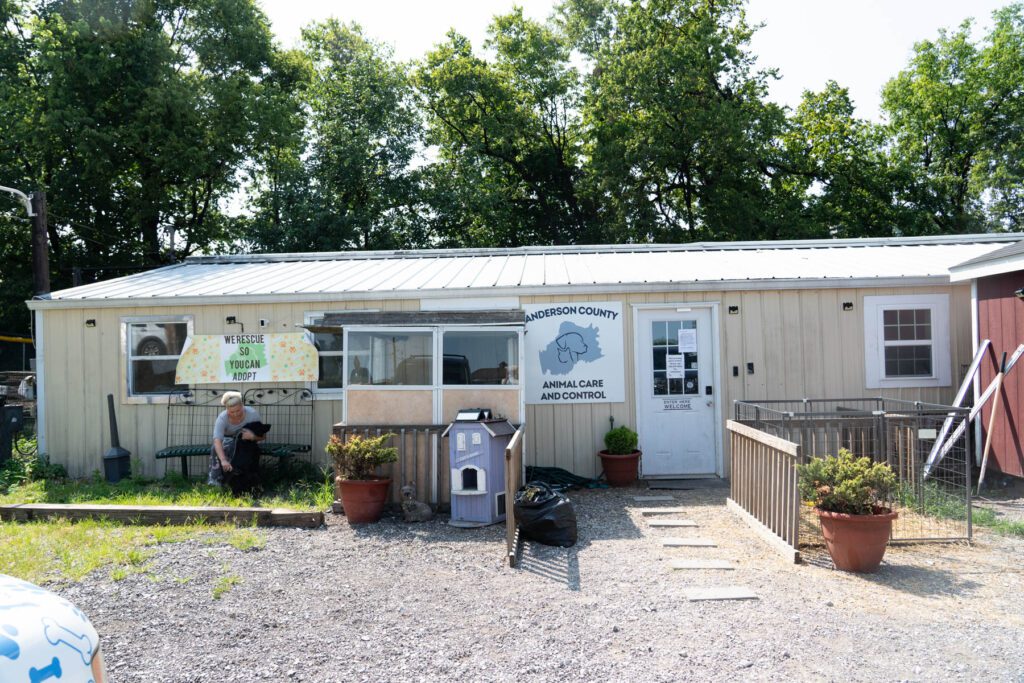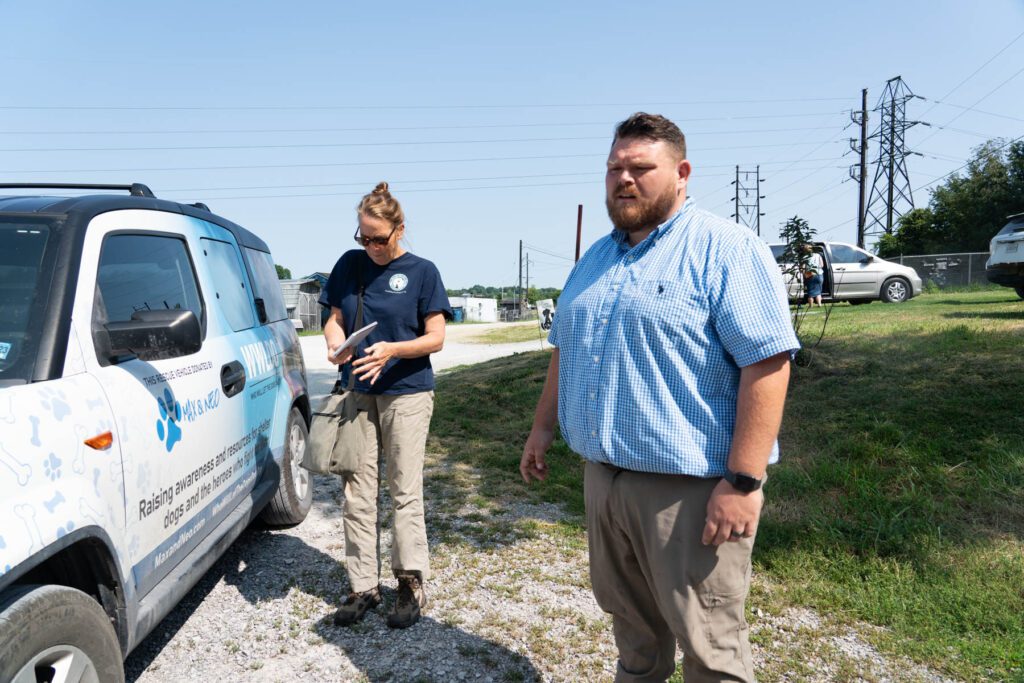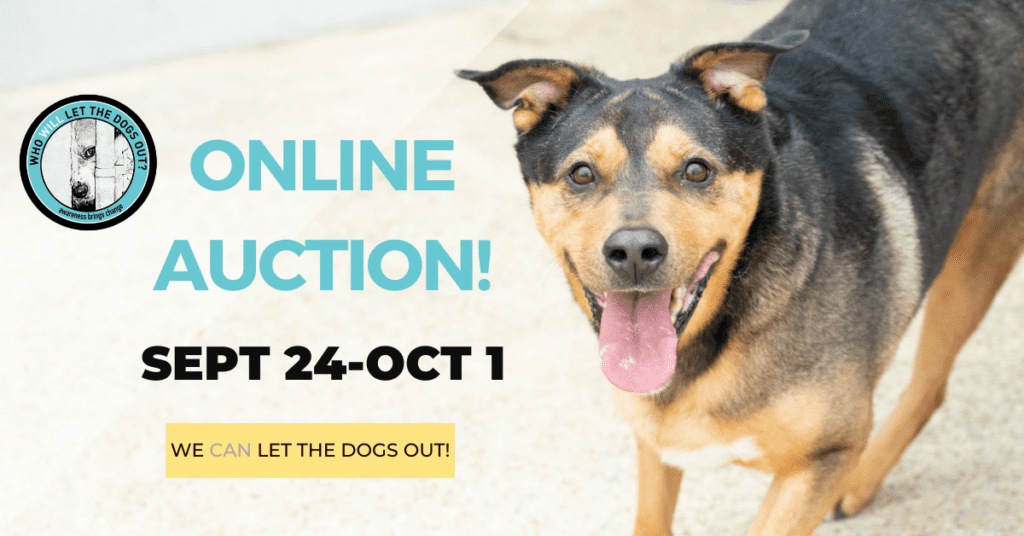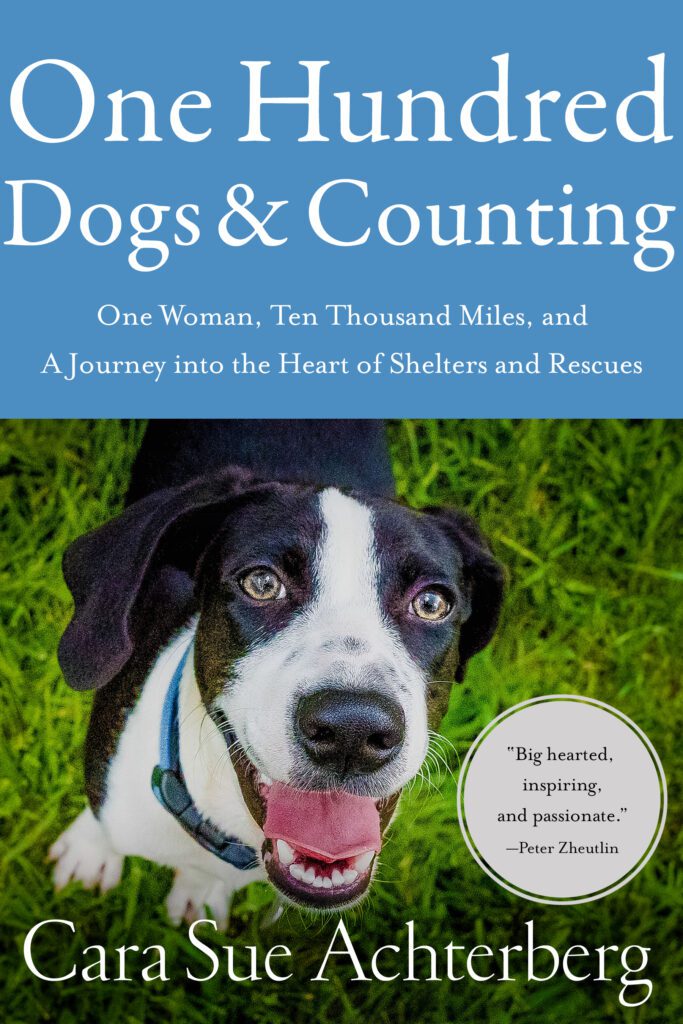Right in the center of the state, near Lexington, in a county filled with expansive horse farms and massive distilleries, the Anderson County Animal Care and Control shelter can be found right next to the Wild Turkey Distillery (and the county dump) in Lawrenceburg. It’s a place where every dog gets a chance.

Zach is the shelter director/ACO and has worked at the shelter for ten years. He’s been the director for the past five. Zach grew up in the area and remembers coming to the shelter to visit the animals as a treat for helping his dad take things to the dump.
Ten years ago, when Zach started, the shelter was very different. They were killing most of the animals that ended up there. It was an accepted practice. Zach had to euthanize animals regularly as part of his job. Around 2015, he realized his heart couldn’t continue to kill animals. “I’m not that guy,” he told us. And we soon learned how true that is.


Zach has had plenty of trauma in his life and his philosophy with the animals is that he was given another chance and they should be given another chance too. “People didn’t give up on me and I’m not going to give up on them. If I have the space, why would I give up?”
Zach told us about one dog who was at the shelter for two years and now has her own room equipped with a treadmill in her adopted home and goes on beach vacations.
It was clear after only a few minutes spent with him that Zach has an expansive heart for helping animals and people. He referred to his staff and volunteers as a family. Sharing how they work as a team and truly support each other.
The shelter handles about 400-500 dogs a year. There are 16 kennels, but they have a large foster base and at the time of our visit, had 28 dogs in foster care. A a dog in foster care is going to be happier and better prepared to be adopted.
That said, living at the Anderson shelter is pretty nice for the dogse. Dogs that need a little work or are new arrivals stay at the shelter. They spend their days in outside runs and communal spaces, and their nights inside in individual kennels. The small, old metal building is retrofitted with fear-free kennels Zach drove hours to pick up from a shelter that was discarding them. It’s air conditioned and the metal roof is insulated and has some sound dampening. There is a fenced run that links the indoor kennel area to the outside play areas under the shade trees beside the shelter. Zach uses everything he can find (being next to the dump he often finds useful items there) to create an efficient, usable space for the animals. The cats even have an indoor/outdoor catio created from scavenged building materials.






We met Green, a young cattle dog who had already experienced some serious trauma in his short life and was frightened of noises, sudden movements, and people. The staff and volunteers were giving him the space and time he needed to feel safe. I couldn’t help but think many municipal shelters would not give this dog that kind of chance.
Becca, one of the volunteers (who is at the shelter every day, 8am-8pm!), patiently worked with Green as he circled the playyard avoiding her outstretched hand. Eventually she was able to get a leash on him and take him out for a walk. He was a beautiful dog but clearly unsure of us.


(NOTE: Green was successfully adopted out since our visit.)
We also met Nova, a large collie type dog who was beautiful and friendly, greeting us upon our arrival and conning me out of the treats in my pockets by sitting perfectly and turning her big does eyes on me. She probably weighed 65 pounds. When she arrived at the shelter, she weighed only 40.


This is a healing place where the people are happy to be there, grateful to spend their days with the animals, Zach included. “The animals have given me so much,” he told me and clearly, he sees it as a privilege to give back to them.
Zach sees that as one of the biggest problems is people having expectations for dogs that are not fair. Like the pair of beagles who landed in the shelter because they couldn’t handle apartment living. They need a home where they can sniff and run and make all the noise they want.
The Anderson County shelter had so many good practices – utilizing foster care, having long hours that are convenient (8am-8pm), playgroups, fear-free kennels, plus things like going into the schools to teach kids about shelter dogs and working with people to find ways for them to keep their pets rather than surrender them. A big dream of Zach’s is the New Leash on Life program. He’s raising money to create a space where people can come and hang out with dogs, read, do art work, relax, just be with dogs (think Cat Café, but for dogs and minus the coffee). He dreams of a space that will help the dog’s mental health, but help the people’s too.
One of the reasons Zach is having such great success at this shelter is because he is always looking for ideas, for help, for anything that will make the situation better for the animals. He and Devin (the other ACO) are hands on. They do the animal care, the enrichment, the adoptions, they go into the schools, do adoption events, they even cut the grass. He asked us, “What else can I do?”
It was inspiring to spend just an hour with him. I wish we could clone him. This is the kind of leadership we need in our animal shelter communities. It’s understandable why he has such a committed staff, such dedicated volunteers. His enthusiasm for the animals and the possibilities here is contagious. He’d love to get the community to come to the shelter and is working on that challenge. It’s hard when the shelter is located next to the dump, like so many municipal shelters.




As we were getting ready to leave, Rachel, the Animal Caretaker and Becca were going out to evaluate a kitten situation and already looking for a foster for the kittens who could potentially need to be bottle fed.
Despite seeing the worst of people and how that affects dogs, the staff at Anderson is upbeat, positive, focused on fixing the problem not complaining about it. This kind of open-minded search for solutions is what will move us toward sustainable shelters that function as a resource for their community.
If you’d like to help Zach and Anderson County Shelter, shop their Amazon gift lists for dogs: https://www.amazon.com/registries/gl/guest-view/1O80Q4ES5TVRU
Or their list for cats: https://www.amazon.com/registries/gl/guest-view/1UGU1V1ICEF7M

Until each one has a home,
Cara
If you want to learn more, be sure to subscribe to this blog. And help us spread the word by sharing this post with others. Visit our website to learn more.
You can also help raise awareness by following/commenting/sharing us on Facebook, Instagram, YouTube, Tik Tok, and the Who Will Let the Dogs Out podcast.

We’d love for you to support us by registering and bidding during our online auction this September. It’s our biggest fundraiser of the year and is chock-full of great stuff!

Learn more about what is happening in our southern shelters and rescues in the book, One Hundred Dogs & Counting: One Woman, Ten Thousand Miles, and a Journey Into the Heart of Shelters and Rescues (Pegasus Books, 2020). It’s the story of a challenging foster dog who inspired me to travel south to find out where all the dogs were coming from. It tells the story of how Who Will Let the Dogs Out began. Find it anywhere books are sold. A portion of the proceeds of every book sold go to help unwanted animals in the south.
For more information on any of our projects, to talk about rescue in your neck of the woods, or become a WWLDO volunteer, please email whowillletthedogsout@gmail.com or carasueachterberg@gmail.com.
And for links to everything WWLDO check out our Linktree.



Leave a Comment
Sign up for our newsletter
Sign up to have our latest news, grant updates, shelter visits, and more delivered to your inbox.
Share this:
Like this: